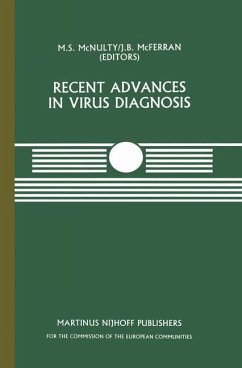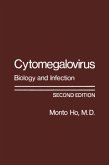The traditional approach to diagnosis of virus infectians by isolation of the causative virus is usually both slow and expensive. More recently, the emphasis has been on the direct detection of viruses or viral antigens in clinical specimens. This can be done using established techniques such as immunofluorescence or electron microscopy, or by newly developed biochemical methods. The purpose of this meeting was to review these and other developments in the laboratory diagnosis of virus infections. We would like to thank all those who contributed to the success of this meeting. In particular, we are grateful to the CEC for financial sponsorship, to Professor C. Dow, Director of the Veterinary Research Laboratories, for help in organising the meeting, and to Miss B. Hamilton for her excellent typing of the manuscripts. M S McNulty J B McFerran VII CONTENTS Page Preface V VIRAL DIAGNOSIS BY TIMMUNOFLUORESCENCE P. S. Gardner APPLICATIONS OF IMMUNOFLUORESCENCE IN VETERINARY VIRAL DIAGNOSIS M. S. McNulty and G. M. Allan 15 TAGGING OF VIRAL ANTIGENS USING IMMUNOPEROXIDASE . AND IMMUNOOOLD TEGINlQUES R. Ducatelle, F. Castryck and J. Hoorens 27 DETECTION OF BVD VIRUS IN VlRAEMIC CATTLE BY AN INDIRECT IMMUNOPEROXIDASE TEGINIQUE A. Meyling 37 VIRAL DIAGNOSIS BY ELECTRON MICROSCOPY J. D. Almeida 47 CAPTURE ASSAYS FOR THE DETECTION OF VIRUS-SPECIFIC IgM ANTIBODY R. S. Tedder 60 DETECTION . AND IDENTIFICATION OF PAPILLOMAVIRUSES IN BENIGN . AND MALIGNANT 'TIlmJRS OF CATTLE M. S. Campo 72 DETECTION OF VIRAL NUCLEIC ACIDS IN CELL CULTURES .
Hinweis: Dieser Artikel kann nur an eine deutsche Lieferadresse ausgeliefert werden.
Hinweis: Dieser Artikel kann nur an eine deutsche Lieferadresse ausgeliefert werden.








